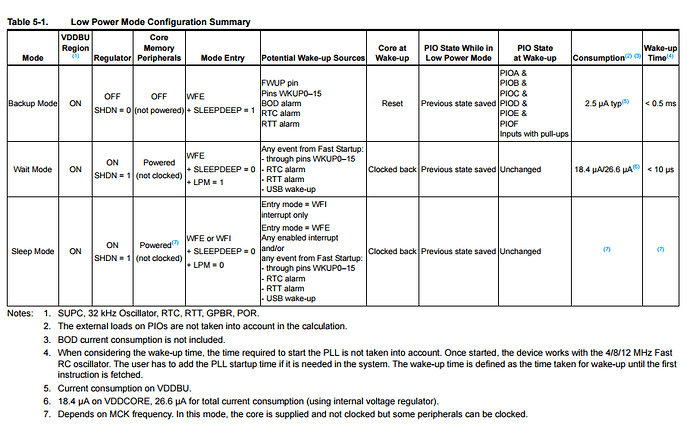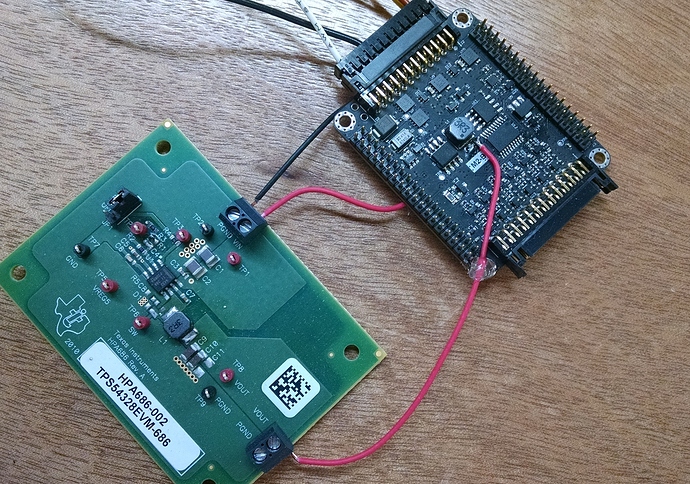Let’s see how low we can make the current draw on M2! It sure would be nice to leave M2 plugged into a car and not have to worry about draining the battery.
To accomplish this, we’ll need to take advantage of several things, including the “Low Power Control” circuit found on page 4 of the interface board schematic found here.
Then, we’ll want to turn off all peripherals, and put the SAM3X into a low power mode. The SAM3X offers several ways of doing this, as shown on this table found on page 27 of the datasheet:
Ideally, we’d wake up by monitoring the ADC line (PA6, or Analog IN 4) that is tied to the main +12V input. The idea is that when the voltage drops to a certain level, this assumes that the car is turned off. When that voltage raises to a certain level, we can assume the car is turned back on (Alternator is in use).
There are a few projects floating around out there we can use for reference, here are a couple:
https://forum.arduino.cc/index.php?topic=469943.0
http://wiki.wood-walker.com/doku.php/en/ww-core/power-management/conntroller
So, Let’s work together to figure this one out!


